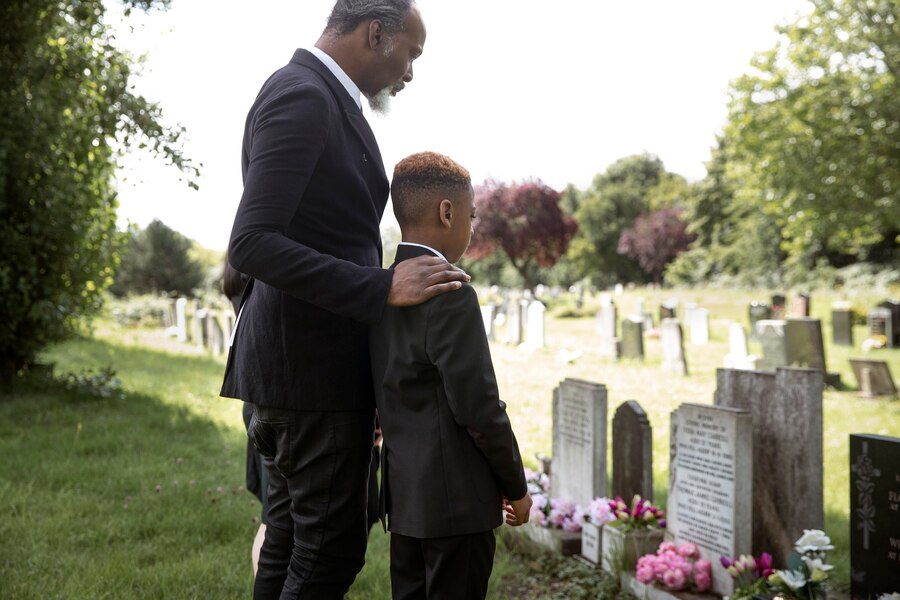
What Films Get Wrong About Death and Mourning
Death, mourning, and grief are somewhat taboo topics, so we don’t often confront these serious and important realities of life. Unfortunately, much of the entertainment we consume sets us up with inaccurate or misleading impressions of these topics.
What do films get wrong about death, mourning, and grief – and what should we learn instead?

Mourning Isn’t Over in Two Hours
Movies are designed to be relatively short, digestible entertainment experiences. We can’t reasonably expect them to show every detail of human life over the course of weeks, months, and especially years. But at the same time, movies often demonstrate death, grief, and mourning in a way that makes the process seem quick and easy.
For example, in a superhero movie, when someone dies, their death is usually accompanied by a scene where other heroes stand around the grave and look at it silently for a moment. But by the next scene, everyone is thrust back into action, or possibly even daily life.
In more complex movies, grief is explored a bit more fully, sometimes unfolding over the course of several deliberately written scenes. But even then, the concept of grief and mourning are typically abandoned once those scenes have accomplished their narrative purpose.
But in real life, grief and mourning sometimes follow you for many years, and you’ll never truly forget about the loved one who died. You’ll have good days and bad days, little reminders that spark emotion in you, and a very complex relationship with your own emotions. The journey is much longer and more complicated than movies would have you believe.
 Graves and Cemeteries Aren’t as Common Anymore
Graves and Cemeteries Aren’t as Common Anymore
In visual media, we often see characters visiting traditional gravestones in traditional cemeteries. While this practice certainly does still happen, it’s becoming much less common. That’s not because people are less inclined to visit the final resting places of their loved ones, but because traditional burials and cemeteries are no longer as popular.
Instead, more people are turning to cremation. Cremation is highly affordable, and offers a variety of options for how to mourn the deceased. You can scatter the ashes in a memorable resting place, store the ashes in a traditional urn, or even use 3D printing to customize your own urn.
Susan Fraser, founder of In The Light Urns, has provided unique and personalized memorial urns to families for more than two decades. Unlike the ways in which memorialization is portrayed in films, Fraser notes that people are looking for customizable options in their urns and memorial keepsakes, to help them process their grief more fully. From biodegradable containers that are eco-friendly, to cremation jewelry and 3D-printed urns for ashes in a wide range of designs and styles, families want options that align with their beliefs and honor the legacy of someone they’ve lost.
Instead of placing a standard vase-style urn on the mantel like in many films and TV shows, grieving families are seeking out memorials with add-ons such as high-definition images. They may also look for a 3D-printed urn in the shape of an object that was important to their loved one, such as a vehicle, animal, or even a personalized drink cup. That’s anything but conventional, but it is becoming increasingly popular as a way to make sure someone who is grieving can feel close to their lost loved one and continue to remember the special relationship they had with them.
 There Isn’t a Single “Right” Way to Grieve or Mourn
There Isn’t a Single “Right” Way to Grieve or Mourn
Similarly, there isn’t a single right way to “grieve” or mourn. Film and TV show writers often work with conventions and stereotypes, trying to boil down what is a very emotionally complicated and multifaceted process into something that’s easily digestible for the masses. But the reality is, each person approaches death, grief, and mourning in their own, unique way.
If your experience with death and grief doesn’t match what you’ve seen in the media, it might make you feel alienated, or that you aren’t processing your emotions in the correct way. But this genuinely isn’t the case; every person must discover and follow their own emotional journey in these complex, overwhelmingly difficult moments.
 Death Often Comes Unexpectedly
Death Often Comes Unexpectedly
There are some great films that go against the grain, but generally, movies and TV shows make death seem somewhat predictable. If a person is sick, and they take a turn for the worse, you know they don’t have much time left. When a brave hero charges into battle and experiences a dramatic, emotional flashback, you know their death clock is ticking down.
But in real life, death often comes unexpectedly. People die of accidents, strokes, heart attack, and even simple falls. The most impactful deaths you experience in life aren’t going to come with warning signs or foreshadowing; unfortunately, they’re likely to blindside you.
 Death Isn’t Always Scenic or Pretty
Death Isn’t Always Scenic or Pretty
Movies and TV shows understandably play up the beautiful and artistic side of death. But in real life, death isn’t always scenic or pretty. In the days leading up to death from disease and old age, a person may gradually lose coherence. They may lose control of their bodily functions. They may forget your face or behave in strange, unsettling ways. When they die, they may not drift peacefully into a deep slumber.
It’s a hard thing to deal with. But it’s even harder if you have no idea that you should be expecting it and no frame of reference for how to deal with it. If you contrast an unpalatable “real” death with an idyllic death from a beautiful movie, it could make you feel even worse.
Dramatic and Exciting Deaths Are Quite Rare
Similarly, dramatic and exciting deaths are quite rare. People don’t often die charging into burning buildings, nor do they die after giving inspirational speeches or after finally achieving a lifelong goal.
In the United States, the leading causes of death in 2022 (the most recent year on record via the CDC) were as follows:
- Heart disease: 702,880
- Cancer: 608,371
- Accidents (unintentional injuries): 227,039
- COVID-19: 186,552
- Stroke (cerebrovascular diseases): 165,393
- Chronic lower respiratory diseases: 147,382
- Alzheimer’s disease: 120,122
- Diabetes: 101,209
- Nephritis, nephrotic syndrome, and nephrosis: 57,937
- Chronic liver disease and cirrhosis: 54,803
Apart from the possible exception of some cases within “accidents,” none of these causes of death can be considered dramatic, exciting, or inspiring. Instead, they tend to be uncomfortable, painful, undignified, and in many cases, slow to develop.
None of this is meant to be an excoriation of film or TV. Writers make the choices they do because they’re making an entertainment product, not a guidebook for healthy grief based on solid psychological principles.
Still, it’s helpful to recognize the limitations of popular media when it comes to presenting death, grief, and mourning – even if it’s just to help yourself process these complicated ideas and emotions easier.



